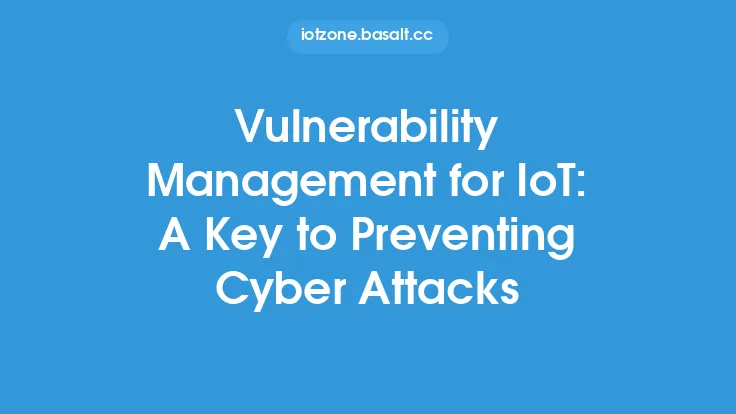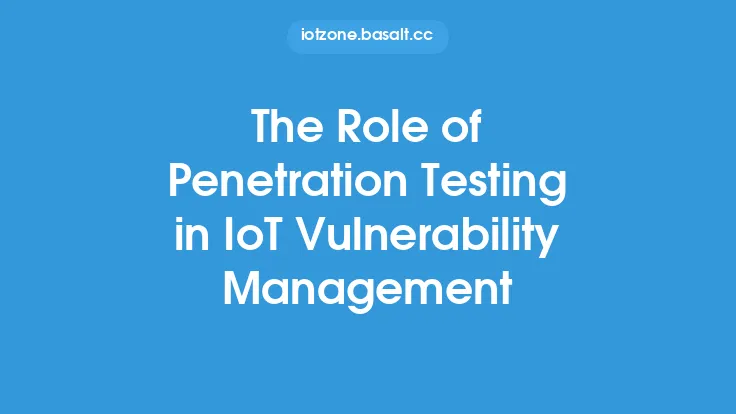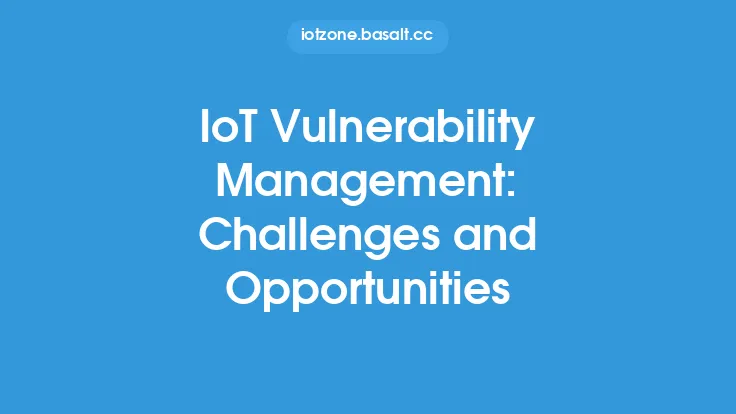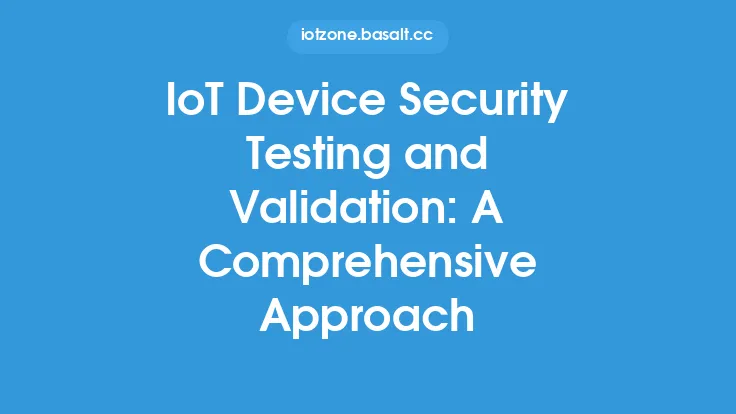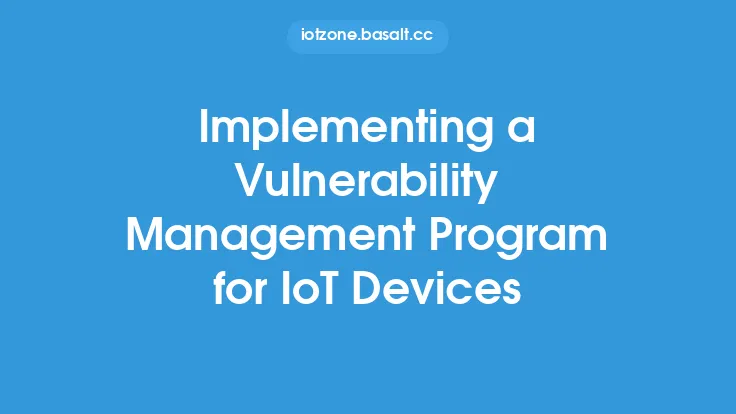The increasing complexity and interconnectedness of Internet of Things (IoT) devices have created a vast attack surface, making them a prime target for cyber threats. As the number of IoT devices continues to grow, the risk of vulnerabilities being exploited by malicious actors also increases. To mitigate this risk, it is essential to adopt a collaborative approach to vulnerability disclosure and management in IoT. This approach involves various stakeholders, including device manufacturers, security researchers, and end-users, working together to identify, report, and remediate vulnerabilities.
Introduction to Vulnerability Disclosure
Vulnerability disclosure is the process of reporting a newly discovered vulnerability to the affected vendor or manufacturer. This process is critical in ensuring that vulnerabilities are addressed before they can be exploited by malicious actors. In the context of IoT, vulnerability disclosure is often a complex process, involving multiple stakeholders and requiring a coordinated effort to ensure that vulnerabilities are properly reported and remediated. The disclosure process typically involves several steps, including initial reporting, verification, and remediation. It is essential to have a clear and well-defined disclosure process in place to ensure that vulnerabilities are addressed efficiently and effectively.
The Role of Stakeholders in Vulnerability Management
Effective vulnerability management in IoT requires the collaboration of various stakeholders, including device manufacturers, security researchers, and end-users. Device manufacturers play a critical role in vulnerability management, as they are responsible for designing and developing secure devices. They must also have a process in place for receiving and responding to vulnerability reports. Security researchers, on the other hand, are responsible for identifying and reporting vulnerabilities. They must work closely with device manufacturers to ensure that vulnerabilities are properly reported and remediated. End-users also play a critical role in vulnerability management, as they are often the first to detect and report vulnerabilities.
Collaborative Vulnerability Disclosure Models
There are several collaborative vulnerability disclosure models that can be used in IoT, including the coordinated disclosure model and the bug bounty model. The coordinated disclosure model involves a coordinated effort between the security researcher and the device manufacturer to disclose vulnerabilities. This model ensures that vulnerabilities are properly reported and remediated before they are publicly disclosed. The bug bounty model, on the other hand, involves offering rewards to security researchers for identifying and reporting vulnerabilities. This model provides an incentive for security researchers to identify and report vulnerabilities, and it also helps to ensure that vulnerabilities are properly remediated.
Technical Aspects of Vulnerability Disclosure
From a technical perspective, vulnerability disclosure in IoT involves several key considerations, including the use of secure communication protocols and the implementation of secure coding practices. Secure communication protocols, such as Transport Layer Security (TLS) and Secure Sockets Layer (SSL), are used to protect vulnerability reports from interception and exploitation. Secure coding practices, such as input validation and error handling, are used to prevent vulnerabilities from being introduced into IoT devices. Additionally, IoT devices must be designed with security in mind, using techniques such as secure boot and secure firmware updates to prevent vulnerabilities from being exploited.
Benefits of Collaborative Vulnerability Disclosure
The benefits of collaborative vulnerability disclosure in IoT are numerous. It helps to ensure that vulnerabilities are properly reported and remediated, reducing the risk of exploitation by malicious actors. It also helps to improve the overall security posture of IoT devices, by identifying and addressing vulnerabilities before they can be exploited. Additionally, collaborative vulnerability disclosure helps to build trust between stakeholders, including device manufacturers, security researchers, and end-users. This trust is essential in ensuring that vulnerabilities are properly reported and remediated, and that IoT devices are secure and reliable.
Challenges and Limitations
Despite the benefits of collaborative vulnerability disclosure, there are several challenges and limitations that must be addressed. One of the main challenges is the lack of standardization in vulnerability disclosure processes. This can make it difficult for security researchers to report vulnerabilities, and for device manufacturers to respond to vulnerability reports. Another challenge is the lack of resources and expertise, particularly among small and medium-sized device manufacturers. These organizations may not have the resources or expertise to properly respond to vulnerability reports, or to implement secure coding practices. Finally, there is a need for greater awareness and education among end-users, to ensure that they understand the importance of vulnerability disclosure and management.
Best Practices for Collaborative Vulnerability Disclosure
To ensure effective collaborative vulnerability disclosure in IoT, several best practices must be followed. These include establishing a clear and well-defined disclosure process, providing incentives for security researchers to identify and report vulnerabilities, and implementing secure communication protocols and secure coding practices. Device manufacturers must also be transparent and responsive to vulnerability reports, and must work closely with security researchers to ensure that vulnerabilities are properly remediated. Additionally, end-users must be educated and aware of the importance of vulnerability disclosure and management, and must take steps to ensure that their IoT devices are secure and up-to-date.
Conclusion
In conclusion, collaborative vulnerability disclosure and management are critical components of IoT security. By working together, device manufacturers, security researchers, and end-users can help to ensure that vulnerabilities are properly reported and remediated, reducing the risk of exploitation by malicious actors. While there are several challenges and limitations that must be addressed, the benefits of collaborative vulnerability disclosure are numerous. By following best practices and establishing a clear and well-defined disclosure process, we can help to improve the overall security posture of IoT devices, and ensure that they are secure and reliable.

